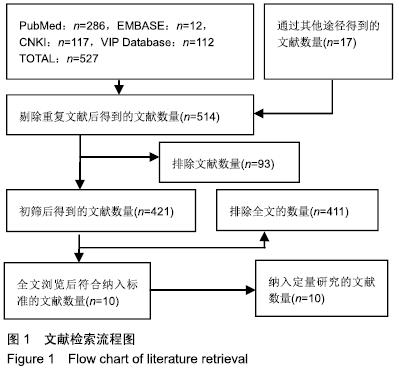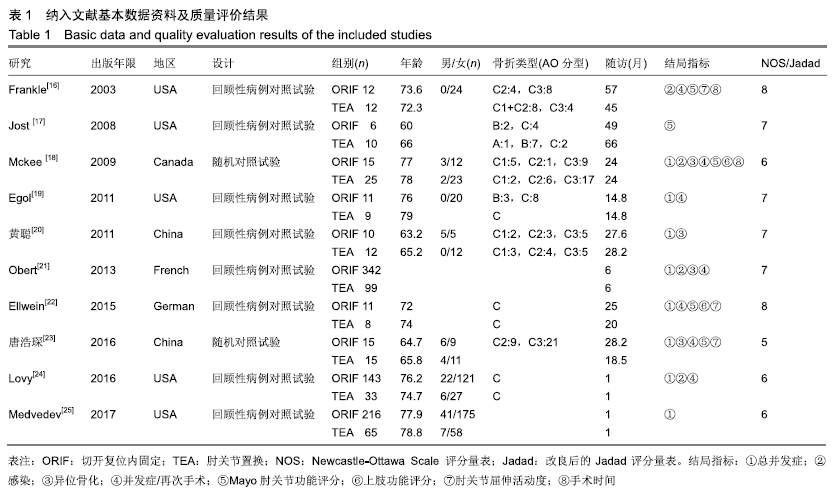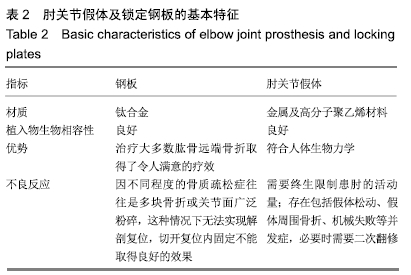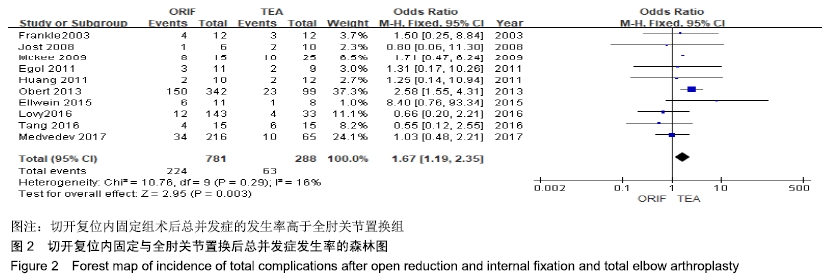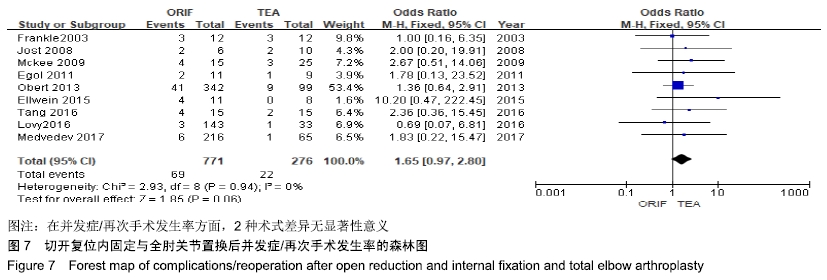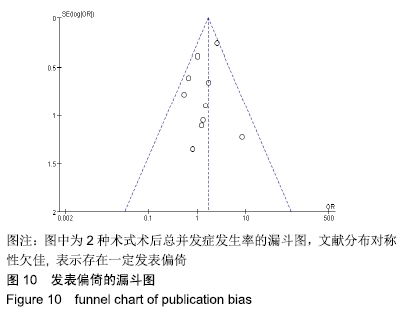[1] AMIR S, JANNIS S, DANIEL R. Distal humerus fractures: a review of current therapy concepts. Curr Rev Musculoskelet Med. 2016; 9(2):199-206.
[2] ROBINSON CM, HILL RM, JACOBS N, et al. Adult distal humeral metaphyseal fractures: epidemiology and results of treatment. J Orthop Trauma. 2003;17(1):38-47.
[3] SHARMA S, JOHN R, DHILLON MS, et al. Surgical approaches for open reduction and internal fixation of intra-articular distal humerus fractures in adults: A systematic review and meta-analysis. Injury. 2018: S0020138318302894.
[4] NIJS S. Distal Humerus Fracture// Fracture Reduction and Fixation Techniques. 2018.
[5] JUPITER JB, RING D.Fractures of the distal humerus. Orthop Clin North Am. 2000;31(1):103-113.
[6] CORRADI A, TALAMONTI T, CABITZA P, et al. Innovative techniques for the osteosynthesis of distal humeral fractures. Injury. 2010; 41(11):1117-1119.
[7] KORNER J, LILL H, MÜLLER LP, et al. Distal humerus fractures in elderly patients: results after open reduction and internal fixation. Osteoporos Int. 2005;16(2):73-79.
[8] MEHLHOFF TL, BENNETT JB. Distal humeral fractures: fixation versus arthroplasty. J Shoulder Elbow Surg. 2011; 20(2):S97-S106.
[9] GAMBIRASIO R, RIAND N, STERN R, et al. Total elbow replacement for complex fractures of the distal humerus an option for the elderly patient. J Bone Joint Surg. 2001;83(7): 974-978.
[10] COBB TK, MORREY BF. Total elbow arthroplasty as primary treatment for distal humeral fractures in elderly patients. Injury. 2000; 31(9):687-692.
[11] GARCIA JA , MYKULA R , STANLEY D . Complex fractures of the distal humerus in the elderly. J Bone Joint Surg. 2002; 84(6):812-816.
[12] PROUST J, OKSMAN A, CHARISSOUX JL, et al. Intra-articular fracture of the distal humerus: outcome after osteosynthesis in patients over 60. Revue De Chirurgie Orthopédique Et Réparatrice De L Appareil Moteur. 2007; 93(8):798-806.
[13] WELSINK CL, LAMBERS KTA, VAN DEURZEN DFP, et al. Total elbow arthroplasty: a systematic review. JBJS Rev. 2017;5(7):e4.
[14] SHIN SJ, SOHN HS, DO NH. A clinical comparison of two different double plating methods for intraarticular distal humerus fractures. J Shoulder Elbow Surg. 2010;19(1):2-9.
[15] GITHENS M, YAO J, SOX AH, et al. Open reduction and internal fixation versus total elbow arthroplasty for the treatment of geriatric distal humerus fractures: a systematic review and metaanalysis.J Orthop Trauma. 2014;28(8): 481-488.
[16] FRANKLE MA , HERSCOVICI D, DIPASQUALE TG, et al. A comparison of open reduction and internal fixation and primary total elbow arthroplasty in the treatment of intraarticular distal humerus fractures in women older than age 65. J Orthop Trauma. 2003;17(7):473-480.
[17] JOST B, ADAMS RA, MORREY BF. Management of acute distal humeral fractures in patients with rheumatoid arthritis. A case series. J Bone Joint Surg. 2008;90(10):2197-2205.
[18] MCKEE MD, VEILLETTE CJ, HALL JA, et al. A multicenter, prospective, randomized, controlled trial of open reduction--internal fixation versus total elbow arthroplasty for displaced intra-articular distal humeral fractures in elderly patients. J Shoulder Elbow Surg. 2009;18(1):3-12.
[19] EGOL KA, TSAI P, VAZQUES O, et al. Comparison of functional outcomes of total elbow arthroplasty vs plate fixation for distal humerus fractures in osteoporotic elbows. Am J Orthop. 2011;40(2):67-71.
[20] 黄聪,蒋协远,王满宜. 双钢板内固定与入工全肘关节置换术治疗老年肱骨髁间C型骨折的早期疗效比较[J]. 中华骨科杂志, 2011,31(3):243-248.
[21] OBERT L, FERRIER M , JACQUOT A , et al. Distal humerus fractures in patients over 65: complications. Orthop Traumatol Surg Res. 2013;99(8):909-913.
[22] ELLWEIN A, LILL H, VOIGT C, et al. Arthroplasty compared to internal fixation by locking plate osteosynthesis in comminuted fractures of the distal humerus. Int Orthop. 2015;39(4):747-754.
[23] 唐浩琛,向明,徐虹霞,等. 两种手术治疗老年骨质疏松性复杂肱骨远端骨折的早期疗效比较[J]. 中国中医骨伤科杂志, 2016, 24(8):11-15.
[24] LOVY AJ, KESWANI A, KOEHLER SM, et al. Short-term complications of distal humerus fractures in elderly patients: open reduction internal fixation versus total elbow arthroplasty. Geriatr Orthop Surg Rehabil. 2016;7(1):39-44.
[25] MEDVEDEV G, WANG C, AMDUR R, et al. Operative Distal Humerus Fractures in Older Patients: Predictors for Early Complications Based on a National Database. HSS J. 2017;13(2 Suppl):212-216.
[26] 姜保国.肱骨远端骨折的治疗进展[J].中国骨与关节外科, 2008, 1(2):145-148.
[27] PATINO JM. Complex distal humerus fractures in elderly patients:open reduction and internal fixation versus arthroplasty. J Hand Surg. 2012; 37(8): 1699-1701.
[28] GUPTA R, KHANCHANDANI P. Intercondylar fractures of the distal humerus in adults: a critical analysis of 55 cases. Injury. 2002;33(6): 511-515.
[29] PENNOCK AT, SALGUEIRO L, UPASANI VV, et al. Closed reduction and percutaneous pinning versus open reduction and internal fixation for type ii lateral condyle humerus fractures in children displaced >2 mm. J Pediatr Orthop. 2016;36(8):780.
[30] MARSH JL, SLONGO TF, AGEL J, et al. Fracture and dislocation classification compendium - 2007: Orthopaedic Trauma Association classification, database and outcomes committee. J Orthop Trauma. 2007; 21(10 Suppl):1-133.
[31] JOHN H, ROSSO R, NEFF U, et al. Distal humerus fractures in patients over 75 years of age. Long-term results of osteosynthesis. Helv Chir Acta. 1993;60:219-224.
[32] KORNER J, LILL H, MÜLLER LP, et al. Distal humerus fractures in elderly patients: results after open reduction and internal fixation. Osteoporos Int. 2005;16(2):73-79.
[33] MANSAT P, NOUAILLE DEGORCE H, BONNEVIALLE N, et al. Total elbow arthroplasty for acute distal humeral fractures in patients over 65 years old–Results of a multicenter study in 87 patients. Orthop Traumatol Surg Res. 2013;99(7):779-784.
[34] CIL A, VEILLETTE CJ, SANCHEZSOTELO J, et al. Linked elbow replacement: a salvage procedure for distal humeral nonunion. J Bone Joint Surg Am. 2008; 90(9):1939-1950.
[35] PRASAD N, ALI A, STANLEY D. Total elbow arthroplasty for non-rheumatoid patients with a fracture of the distal humerus a minimum ten-year follow-up. Bone Joint J. 2016;98-B(3): 381-386.
[36] BOER YAD, HAZES JM, WINIA PC, et al. Comparative responsiveness of four elbow scoring instruments in patients with rheumatoid arthritis. J Rheumatol. 2001; 28(12): 2616-2623.
[37] FRANCHIGNONI F, VERCELLI S, GIORDANO A, et al. Minimal clinically important difference of the disabilities of the arm, shoulder and hand outcome measure (DASH) and its shortened version (QuickDASH). J Orthop Sports Phys Ther. 2014;44(1):30-39.
[38] MALAY S, SUN SG, CHUNG KC, et al. The minimal clinically important difference after simple decompression for ulnar neuropathy at the elbow. J Hand Surg. 2013; 38(4):652-659.
|

